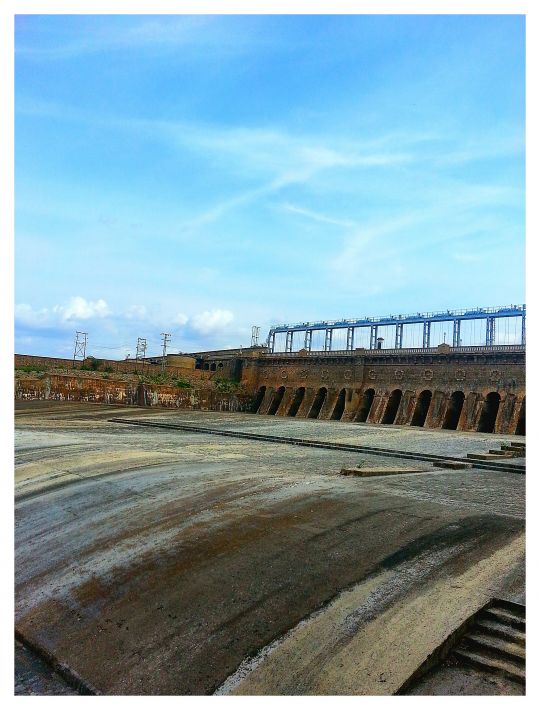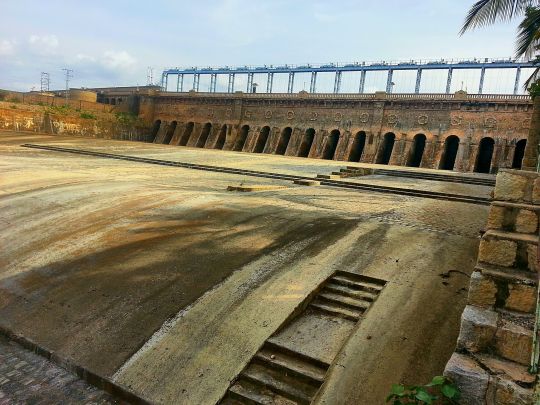HOT TOPICS
SPOTLIGHT AGENCIES
Now that rains have saved Bangalore, forget about it?
Written By silkboard - 4 June, 2013
Bangalore BWSSB Water Complaint Cauvery KNNL
We came "this" close to going dry this summer. How close? Don't really know, but the word is that if rains had arrived 10 days later, we would have hit that point. But now that rains are here, newspapers, BWSSB, KNNL (Neeravari Nigam) will all move on and wait for a crisis to approach next year or year after depending on when we would have the next monsoon shortfall.
Some pics of dry KRS gates for your viewing pleasure, taken just last week.


Shouldn't we be interested in knowing:
- Did we indeed come 'close'?
- How close was it?
- What would be the plan if we crossed some "thresholds"?
- What hard decisions were made if any, like - water supply over hydropower, tapping an irregular or non-approved source for supply?
- What steps or investments are being planned to reduce the risk?
COMMENTS

sanjayv - 4 June, 2013 - 14:08
There are many, many questions we need to ask SB. Water (and waste water) in namma Bengaluru is in bad shape. Spmehow, because we are "better" than some other cities, people are taking it easy.
There are many problems and solutions. But the need of the hour is planning, investment, education and so on to ensure that this city an manage into the future. We have to elaborate on all this and push for it.

dvsquare - 4 June, 2013 - 17:41
SB,
Why are we saying here - "Did we indeed come 'close'?"
We are already beyond close. Cauvery water is available only for less than half population of bangalore, other half still rely on water tankers and borewells. KRS dam getting dry is visible but water table going below 1000 ft is another problem to be looked at and need to do something to find alternate sources of water.
More and more houses are coming on ORR and Sarjapur road, but no water.
We need to ask them -
(1) What is their plan to make water reach every household?
(2) What is their plan to get alternate source of water? Lakes? RWH compulsury?
(3) Reduce dependency on Cauvery.
And many more such questions.

abidpqa - 5 June, 2013 - 18:56
Some questions.
Are there only residential connections provided by BWSSB, or do they provide commercial connections? Usually, they say 10 million people need 140 million liters per day, but all the peopler are not getting BWSSB water. If no commercial connections are not there, how water is obtained for commercial purposes? Commercial use will be driving up the per person consumption data
Why not bring bigger restrictions on water like banning washing cars, watering plants etc, at least From April to June. banning common taps in apartments, which is used to wash cars could be very effective.
Are they doing some study about the causes of less rains, relation between increase in cars and decrease in rains ?! or filling up of lakes and decrease in rains. There is need for study with heavy budget to find the reasons.

Noted abidpqa, so shall I summarize all now?
silkboard - 6 June, 2013 - 02:12
I need to summarize list of data points and questions by EOD today so set up the meeting. I have noted everything so far - will include them, may merge things a bit and reword etc.
Stay tuned.

silkboard - 4 June, 2013 - 16:45
Now that the focus is off them (rains are here), time to meet and figure how bad was the situation, and if anything is in the works as a result.
Nothing much, just a meeting with them. Sent an SMS already, awaiting response.
PRAJA.IN COMMENT GUIDELINES
Posting Guidelines apply for comments as well. No foul language, hate mongering or personal attacks. If criticizing third person or an authority, you must be fact based, as constructive as possible, and use gentle words. Avoid going off-topic no matter how nice your comment is. Moderators reserve the right to either edit or simply delete comments that don't meet these guidelines. If you are nice enough to realize you violated the guidelines, please save Moderators some time by editing and fixing yourself. Thanks!





